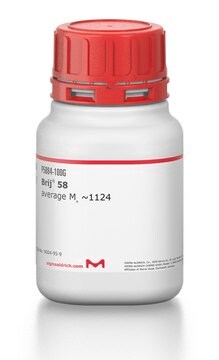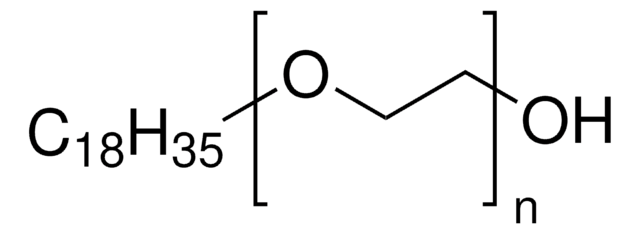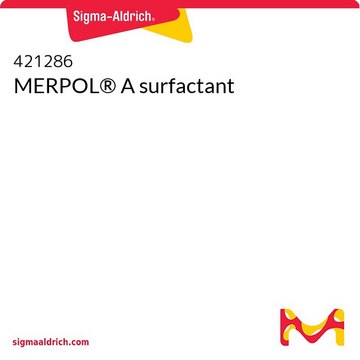388866
Brij® 93
average Mn ~357
Synonym(s):
Polyethylene glycol oleyl ether, Polyoxyethylene (2) oleyl ether
About This Item
Recommended Products
vapor pressure
0.26 psi ( 20 °C)
Quality Level
form
liquid
mol wt
average Mn ~357
refractive index
n20/D 1.462 (lit.)
density
0.912 g/mL at 25 °C (lit.)
HLB
4
InChI
1S/C20H40O2/c1-2-3-4-5-6-7-8-9-10-11-12-13-14-15-16-17-19-22-20-18-21/h9-10,21H,2-8,11-20H2,1H3/b10-9-
InChI key
KWVPFECTOKLOBL-KTKRTIGZSA-N
Related Categories
General description
Legal Information
signalword
Warning
hcodes
Hazard Classifications
Aquatic Chronic 2 - Skin Irrit. 2
Storage Class
10 - Combustible liquids
wgk_germany
WGK 1
flash_point_f
>464.0 °F - Equilibrium method
flash_point_c
> 240 °C - Equilibrium method
ppe
Eyeshields, Gloves, type ABEK (EN14387) respirator filter
Choose from one of the most recent versions:
Already Own This Product?
Find documentation for the products that you have recently purchased in the Document Library.
Customers Also Viewed
Our team of scientists has experience in all areas of research including Life Science, Material Science, Chemical Synthesis, Chromatography, Analytical and many others.
Contact Technical Service












